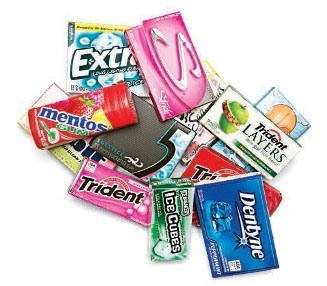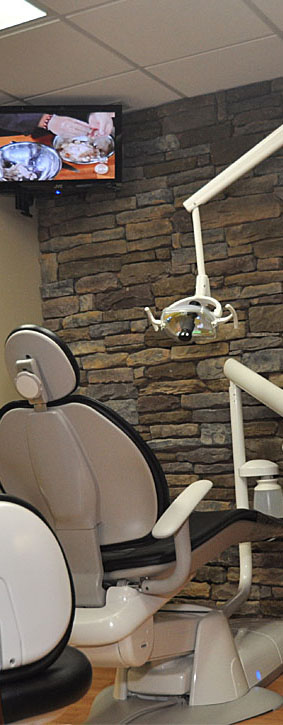 Clinical studies have revealed that chewing sugarless gum for 20 minutes following meals can help prevent tooth decay.
Clinical studies have revealed that chewing sugarless gum for 20 minutes following meals can help prevent tooth decay.
Here’s how it works – the chewing motion increases the flow of saliva – which in turn washes away food and other debris, neutralizes acids produced by bacteria in the mouth and provides disease-fighting substances throughout the mouth. Increased saliva flow also carries with it more calcium and phosphate to help strengthen tooth enamel.
Currently, the only varieties of gum with the ADA Seal are sugarless. They are sweetened by non-cavity causing sweeteners such as aspartame, xylitol, sorbitol or mannitol. Sugar-free gum sweetened with xylitol has the added benefit of inhibiting the growth of Streptococcus mutans, one of the oral bacteria that cause cavities. In the presence of xylitol, the bacteria lose the ability to adhere to the tooth, stunting the cavity-causing process. With xylitol use over a period of time, the types of bacteria in the mouth change and fewer decay-causing bacteria survive on tooth surfaces.
Chewing sugar-containing gum also increases saliva flow; however it contains sugar which is used by plaque bacteria to produce decay-causing acids.
Chewing gum is definitely NOT a substitute for brushing and flossing. It can only assist in the fight against cavities. The ADA still recommends brushing twice a day with fluoride toothpaste and cleaning plaque from between your teeth at least once a day with dental floss or other interdental cleaners.
So go ahead and reach for that stick of sugarless gum after your next meal. As always if you have any questions regarding chewing gum or oral health, please don’t hesitate to contact us here at Moore Family Dental.



